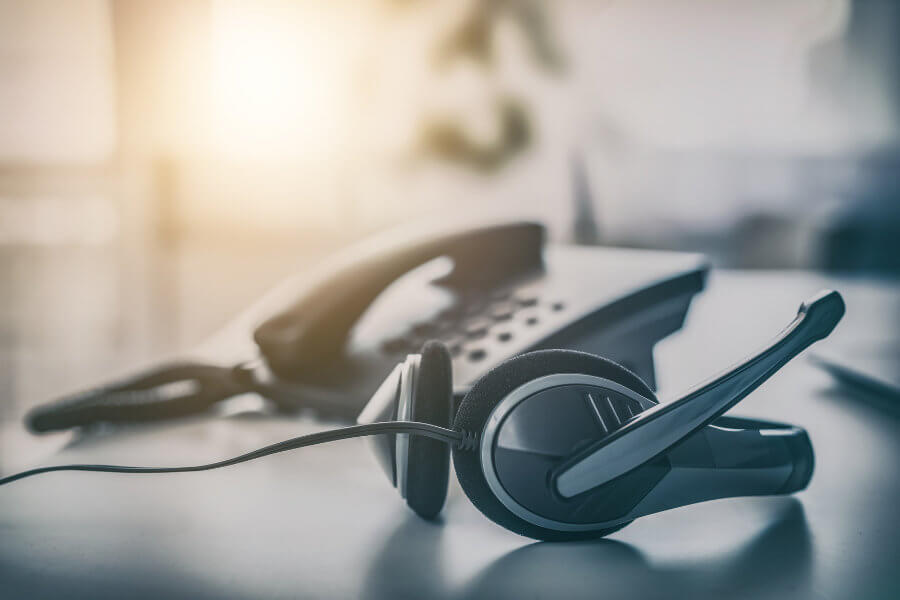
Active Listening – Challenges of the plug-and-play hybrid workplace
Active Listening has taken on a whole new meaning over the past two years.
As lockdowns to limit the spread of the Pandemic occurred throughout every State and Territory, contact centre staff were transformed into home-based customer concierges.
They became the essential channel to connect brands with Australian customers.
As online and over-the-phone sales rose, and delivery delays became more commonplace, the reliance on call centre staff increased daily.
Contact centre agents became more than troubleshooters.
The businesses that had invested in high-performing plug-and-play audio technology, and understood and applied inbuilt functions and analytics, were best equipped to maintain excellent professional standards.
When in-house becomes at-home
After years of working from an office with a defined desk and phone workspace, many agents suddenly needed to comply with work from home orders.
Fit-for-task equipment needed to be deployed quickly as lockdowns rolled out.
With employee movement restricted in some local government areas, many in-house contact centres became truly digital.
Those businesses that provided the winning combination of up-to-date information, dependable, reliable technology and clear direction were better able to adapt to meet higher inbound call volumes, stay on-task to maintain brand values and meet customer experience expectations.
Adaptability was the key.
Utilising UC platforms and softphone solutions, cloud technology made it possible for contact centres to continue to operate remotely, retaining workforces while maintaining viable yet reimagined business operations.
But how can you guarantee call quality?

Providing excellent customer service starts with reliability
Quality audio is a fundamental prerequisite for all successful customer conversations.
A professional headset allows software to work effectively.
Add in analytics capabilities and managers have new ways to track and manage performance.
The better the audio quality, the more accurate analytics will be, in turn helping the agent improve and allowing managers to monitor procedures, understanding and empathy.
By embracing technology, agents gain independence while managers are confident that sentiment is being analysed, audio quality is perfect, and background noise is low.
With agents consistently on the phone, and “off-phone” meetings now video-enabled rather than face-to-face, there is an even greater need for professional headsets to be dependable, offer all-day comfort and have enhanced functionality – from Active Noise Cancelling (ANC) through to extended wireless capabilities.
Insights on sound quality, conversation flow and agent audio exposure can be tracked regardless of location, so agents can consistently improve on delivering the voice of the brand.
Performance can also be boosted by harnessing real-time data, and time-tracked metrics can identify noise challenges – wherever those noises may be.
A different type of noise
In general, a home office presents a different “less professional” noise profile to an open-plan office.
Distractions range from residential construction and local traffic noise to internal culprits such as pets and appliances.
Plus, household members working and learning from home offer different challenges from co-workers.
Look for audio devices that also offer integrated “on-call” busy lights to advise others when the agent is concentrating on a customer query.
Empowering and protecting staff – wherever they are based
Businesses need to empower, develop and protect contact centre agents.
With hybrid workplace environments here to stay, onboarding must include training in technology that goes beyond product/service knowledge and the customer journey.
Technical training needs to cover headset and speakerphone functionality, techniques to reduce fatigue, ways to manage stress and protection from avoidable hearing loss.
Effective hybrid workplaces need audio technology designed to deliver comfort, functionality and end-user engagement for all parties to the conversation.
To enable staff to work remotely and solve problems with autonomy, managers must supply them with the correct tools.
Professional workers need reliable, quality equipment that when used properly, can offer significant noise reduction and allow the agent to understand the caller better and the caller to understand the agent.
Advanced microphone technology, some with multiple microphones, allow agents to hear themselves as they would in a quiet environment, therefore adapting to speak more quietly, resulting in calls that may feel more personal.
Indeed, ensuring agents have the right audio technology can impact on their overall physical wellbeing, resulting in huge benefits to employee satisfaction that has a flow-on positive impact on customer experience journeys.
Functional Investments for the Hybrid Workplace
With flexible working arrangements and the hybrid workplace offering reduced overheads, now is the time for businesses to invest in new technology to enable smarter, more agile contact centre operations.
This essential upgrade is a key component of a sustainable remote working strategy.
Pairing world-class hardware, such as professional headsets, with intelligent software, allows businesses to create call centre operations that strive for customer service excellence as well as best-practice employee care and development.
As Australia adjusts to new normal and businesses re-open, those brands that offered exceptional contact centre practices will be called upon to show others how it’s done.
Recommended Links:

